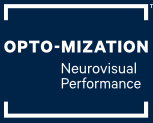Looking for Neurolens? You want to find out if the Neurolenses are better than prism glasses prescribed by an optometrist, and if they are worth the money. I’ve seen patients using the NeuroLens, and tracked their changes.
Long Story Short: Click here
About the Author: Before optometry I was in engineering, and I bring an engineer’s view to how vision works. I love high tech gadgets and am quick to implement them in practice. I’ve found that many fall short of their lofty claims, often sacrificing patient outcomes.
What is NeuroLens
The Neurolens is meant to identify eye misalignment with the Neurolens machine and treat it with patented prism lenses. Headaches, eye fatigue, dry eye sensation and neck pain are all said to be part of eye misalignment problems, in a condition called Trigeminal Dysphoria. It is being advertised to identify eye misalignment as small as 0.01 Prism Diopters and using more than 10,000 data points. Does this matter? Or is it just good marketing?
Does Eye Misalignment Cause Symptoms?
Eye misalignment and binocular dysfunction are common problems that can cause headaches, eye strain, fatigue, migraines, neck pain, difficulty with screens and more. These are not new issues. However, many eye exams focus mostly on eye health and visual acuity, and only look at eye misalignment when it’s quite large. The original way of thinking was that only large eye misalignment problems could cause symptoms, but we now know that small misalignments can cause a lot of symptoms.
What Does Neurolens Test?
The Neurolens unit (NMD2) measures eye alignment horizontal and vertical at both distance and near. It measures what are called associated and dissociated phorias, which are different ways of measuring eye alignment. The patient sits with their head looking into what could be described as a virtual reality unit on a table. This is one area the Neurolens falls short, but more on that later.
Is This Different Than What an Optometrist Tests?
Associated and dissociated phoria testing can be done without a NeuroLens, although it is overlooked in many eye examinations.
Problems with the NeuroLens
One of the problems with the Neurolens is that all of the testing is done in an artificial environment of the machine. The Neurolens also does not account for visual-vestibular integration, or how the eyes and inner ear work together. This testing requires head movement, which cannot be done within the machine. NeuroLens also fails to consider how a person is controlling their eyes during testing, and how this changes with different positions, movement or cues.
NeuroLens prescription lenses
NeuroLenses are heavily marketed and expensive. One of the main selling features of NeuroLenses prescription lenses is contoured prism. This means that there is more prism in the reading part of the lens. In theory this sounds great, because many (not all) people need more prism when reading than when looking at distance. However, it’s a bit like paying twice the price for a dress shoe because it is insulated for walking in the snow. You get better performance buying an equally nice dress shoe and dedicated snow boot for the same price.
A specifically prescribed pair of reading/computer glasses with the appropriate prism will always outperform the reading area of a NeuroLens. The two usage specific glasses can often be had for the same prices as a single pair of NeuroLenses.
Accurate Prescription Glasses
Neurolens takes the right approach by controlling the manufacturing. NeuroLenses come from the company itself, ensuring quality control. The issue is that when a prescription is ordered from a lens company, the prescription is altered in a number of ways to conform to the company’s designs, and it can create unwanted prism. The problem is that they are very expensive.
Taking the engineer’s approach, we figured out how to reverse calculate the changes many labs make, so that the final product has the exact optics that were prescribed. This can be done for significantly less expense than NeuroLens, and often yields better results. The problem of how a person’s prescription is translated into glasses is an industry-wide issue. Patients are often given many options of lens designs, measurements change, and standards aren’t upheld, resulting in incorrect prism and underperforming prescriptions.
Long Story Short
Neurolens may be better than a regular prescription, but it falls short. An optometrist who can conduct the correct testing will give you a better performing prescription at a more reasonable price than NeuroLens. If the only option in your area is NeuroLens, then it is worth at try.

